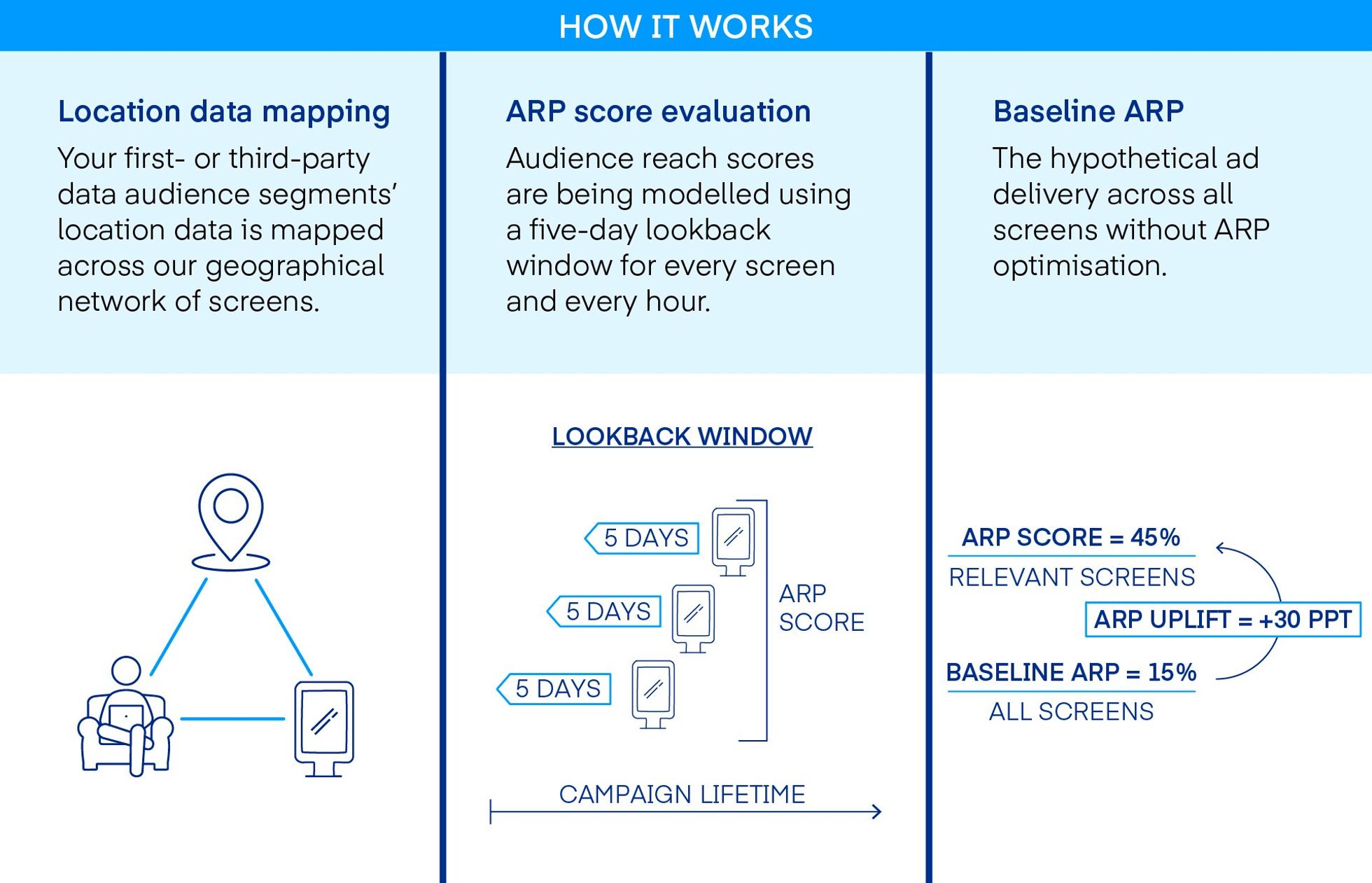Case Studies Connected TV
Hitachi achieves 30% sales lift with data-driven omnichannel strategy

Recruiting fraud is a growing issue for many companies.
The Trade Desk takes this issue seriously and is taking steps to address it.
Share:
In parts one and two of this series, we covered the benefits of programmatic digital out-of-home (DOOH) and the power of its scaled audience targeting. Now we’ll talk about the tools you can leverage once your DOOH ads are up and running to support you in reaching your campaign goals.
Thanks to the improvements we made to programmatic DOOH on our platform, you can now specify your DOOH budget and pace spend to audience impressions, as well as leverage triggers and controls such as weather, foot traffic, venue type, and demographic data to ensure your ad is displayed to the desired audience before it goes live.
By taking an audience-first approach, you can tailor your advertising message with more relevant and customised content. Programmatic DOOH also provides real-time insights into audience engagement, empowering you to optimise your campaign on the fly. This approach reduces ad wastage and maximises campaign impact and ROI.
Our programmatic DOOH approach is not limited to capturing consumers’ attentions on-screen. We also provide you with the opportunity to retarget and engage with customers across multiple digital channels throughout their day.
Our platform uses a combination of geographic data, time stamps, and other data sources to create an audience segment of people who were near a DOOH screen during an ad’s playtime. You can leverage this segment to retarget these customers on other digital channels – when they’re streaming music, reading news online, or using mobile apps – creating a more comprehensive view of the consumer journey and their experience of your brand.
DOOH ad exposures also inform frequency counts for cross-channel engagement – which can significantly improve the efficiency of your media budget while adding a new layer for informed DOOH media-buying decisioning.
As we discussed in part two, we use Audience Reach Percentage (ARP) to measure audience reach effectiveness mid- and post-campaign, aggregating ARP data and summarising it in My Reports.
With the aim of ensuring unbiased measurement, we calculate this score using a five-day lookback window for the same hour, providing an accurate view of audience reach that accounts for variances across hour-of-day exposure. Additionally, we offer a baseline ARP screen/hour-level value for comparative analysis, giving you the ability to see the potential impact of optimising your DOOH spend with our platform’s decisioning. Baseline ARP is the ARP score your campaign would have delivered if you ended up targeting all the screens that are part of your deal in a scenario where you haven’t applied our platform’s decisioning.

DOOH is rapidly gaining momentum as a game-changer for marketers looking to take omnichannel data-driven advertising to the next level. With our market-leading technology, reaching relevant audiences has never been easier.
Our latest DOOH developments allow you to optimise spend, measure impact across screens and channels, and even retarget DOOH-exposed audiences on other channels like Connected TV (CTV). With cross-channel frequency control and ARP spend optimisation, you can maximise media buying efficiency to reach the outdoor audiences that matter most. This allows you to seamlessly extend your data-driven marketing efforts across premium DOOH screens and tell your story across touchpoints your audiences are exposed to throughout their day.
With this approach, you can confidently measure the effectiveness of your targeted DOOH audience reach and make data-driven decisions for your campaigns.
Missed parts one or two? Go back to part one. Go back to part two.
Case Studies Connected TV

Case Studies Our platform

Insights Our platform
